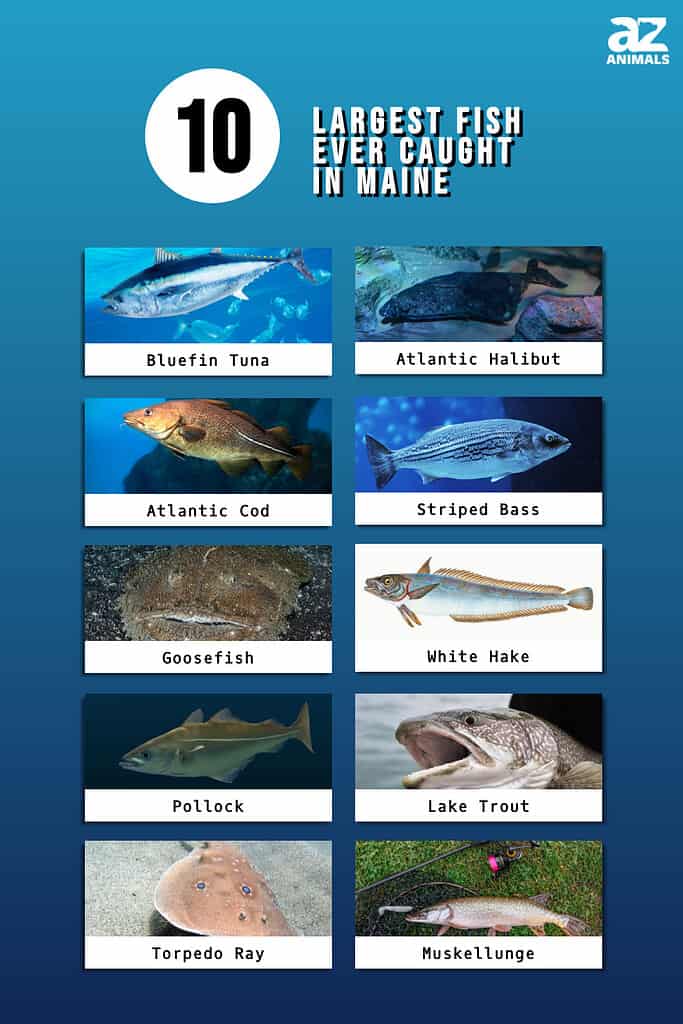
If you ever want to take an incredible fishing trip, visiting Maine is one of the best ways to commence it. It is home to over 32,000 miles of streams, rivers, and other bodies of water. With millions of miles of acres of lush landscape, few places offer the abundance that the 6,000+ lakes and ponds of the Pine Tree State. With such incredible opportunities for fishing, the high records for the largest fish caught in Maine are unsurprising. Let’s take a look at the record-breaking fish and their anglers that make this state even more appealing for creational and commercial fishing.
Records for the Largest Fish Ever Caught in Maine
Bluefin Tuna – 1,155 lbs

The average size of the largest bluefin tuna is 130 pounds.
©iStock.com/LUNAMARINA
Atlantic bluefin tuna have a rhomboid shape to their body, with a cone-shaped head and a massive mouth. Their name comes from the description of their body, which has a dark blue upper half and gray along its belly. They also have short pectoral fins.
Ranching for tuna started in the 1970s, raising them as juveniles in pens until they grew to massive weights. These huge fish earn a major payout in Japanese markets. Unfortunately, this process also threatens the long-term growth of the species. Combined with late sexual maturity and slow growth, the total population dropped 90% in the last 50 years.
The angler who managed to wrestle this 1,155-pound fish is Tim Tower with the help of Percy Stevens Jr. They caught the fish in 1981 at Perkins Cove. His catch surpassed the previous record of an 819-pound bluefin tuna, caught by Jerry Jemison in 1977.
Atlantic Halibut – 215 lbs
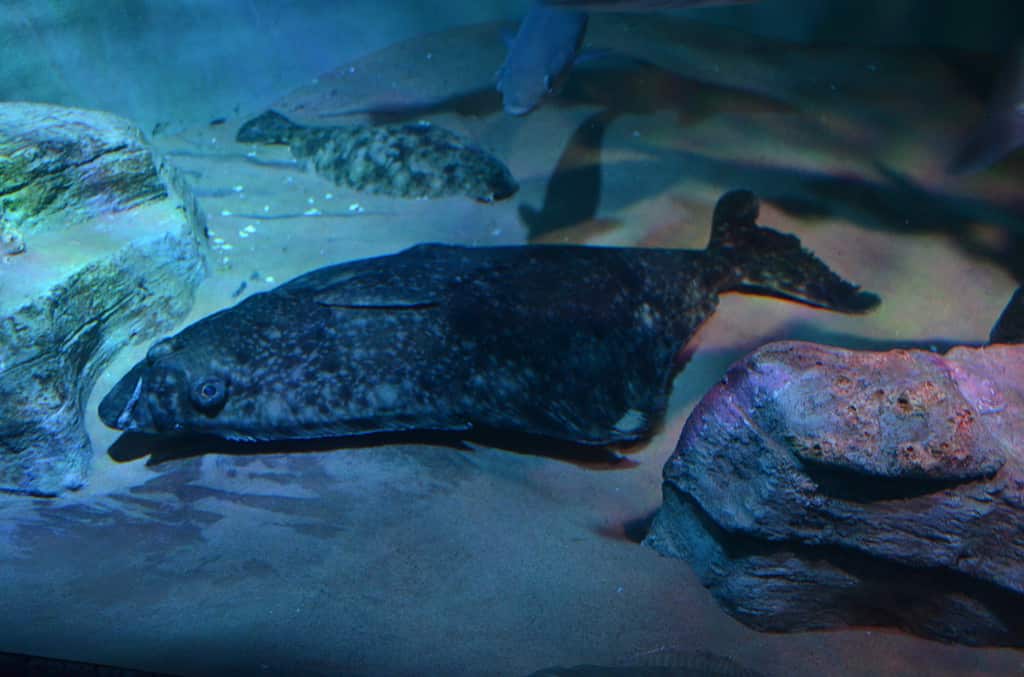
Atlantic halibut prefers to live at a depth of no less than 200 feet
.The Atlantic halibut is a flatfish that usually prefers a habitat near sand or gravel. It is the largest species of bony fish in the entire world. Unfortunately, overfishing is the main reason it is a threatened species. Their strong body allows them to swim long distances, putting up quite a fight for anyone who tries to catch them.
The next record for fish caught in Maine is drastically lower than the bluefin tuna above. The saltwater Atlantic halibut that takes second place on this list came from Bailey’s Island. Caught by Richard Hincman, it weighed 215 pounds. No one has surpassed this record since Hincman established it in 1965.
Atlantic Cod – 80 lbs
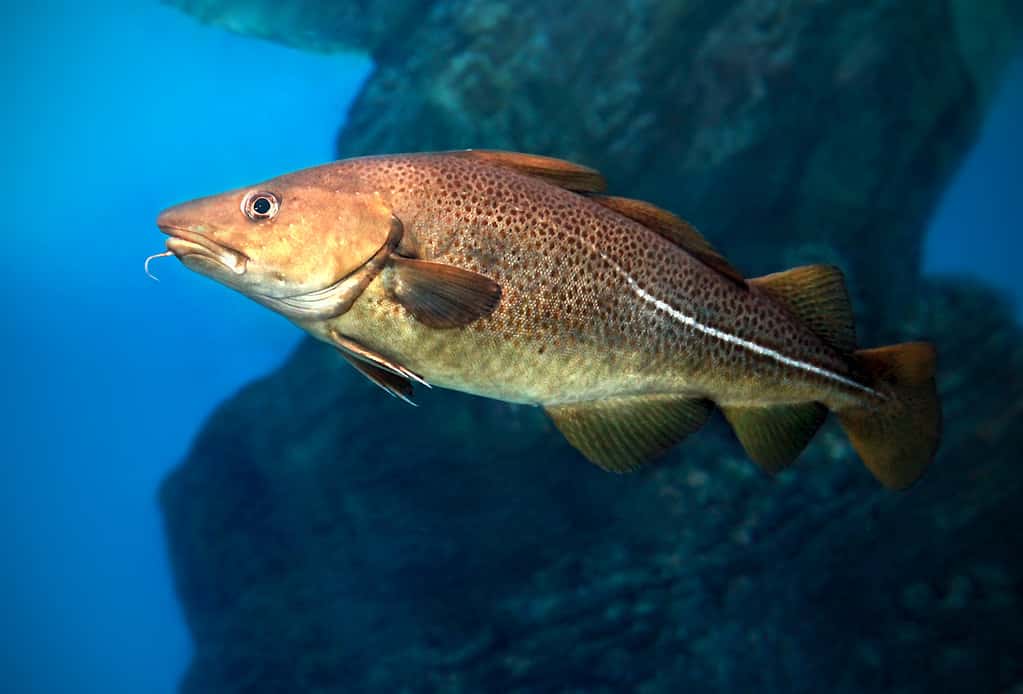
Atlantic cod are one of the most consumed commercially available species of fish.
©iStock.com/TatianaMironenko
Primarily found in the western Atlantic Ocean, this species of cod lives around the world. Without being caught or kept in captivity, the Atlantic cod lives for about 25 years, usually growing no longer than 55 inches. However, many records indicate that they sometimes reach almost 71 inches.
These fish are brown or green, featuring a strip along their lateral line that helps them sense vibrations in the water. They sometimes swim as deep as 1,000 feet below sea level along the shoreline. It is one of the most popular fish to catch, making up a significant portion of the fishing economy in the United States and Canada. In 1992, officials banned catching Atlantic cod, but the population is still in recovery.
Neil Downey set the record with his 80-pound, 7-ounce catch in 1992. He caught the record-breaking Atlantic cod in Perkins Cove, Ogunquit. Some records indicate that other states have seen Atlantic cod that weighed over 110 pounds. Before Downey, the record was held by Robert Withee in Massachusetts, weighing 76 pounds.
Striped Bass – 67 lbs
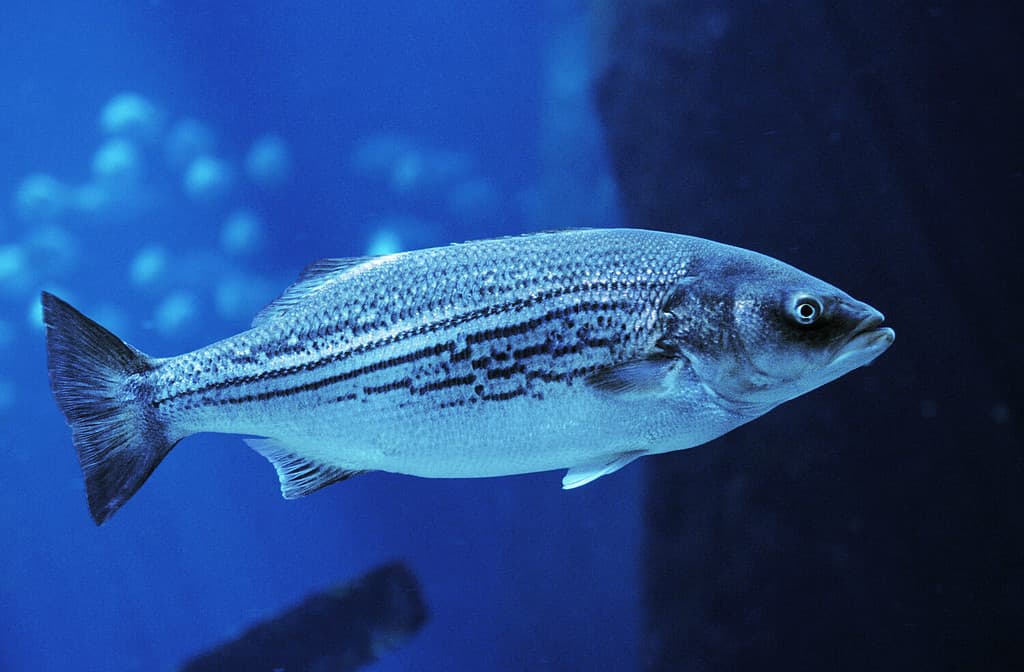
Though the massive size of Maine’s largest striped bass ever caught is 67 pounds, the global record is almost twice as big.
©slowmotiongli/Shutterstock.com
The striped bass lives along the Atlantic coast, making it heavily popular in the United States. Early colonists fished for this bass as one of the main sources of food to survive. With the abundance of bass in the area, it became a staple for their diet that hasn’t waned through time. Now, the striped bass is so popular that it is the state fish of three eastern states. It is the official saltwater fish of four others, though Maine doesn’t place the same emphasis on it.
This fish has a streamlined body with long dark strips and silvery scales. They easily live in both freshwater and saltwater areas, from Maine to the Gulf of Mexico. However, they only spawn in freshwater.
Caught by Douglas Dodge, the largest striped bass ever recorded in Maine weighed 67 pounds. He caught it in 1978 in the Sheepscot River. The average size of the striped bass is 20-40 pounds, but some specimens are over 120 pounds.
Goosefish – 49 lbs
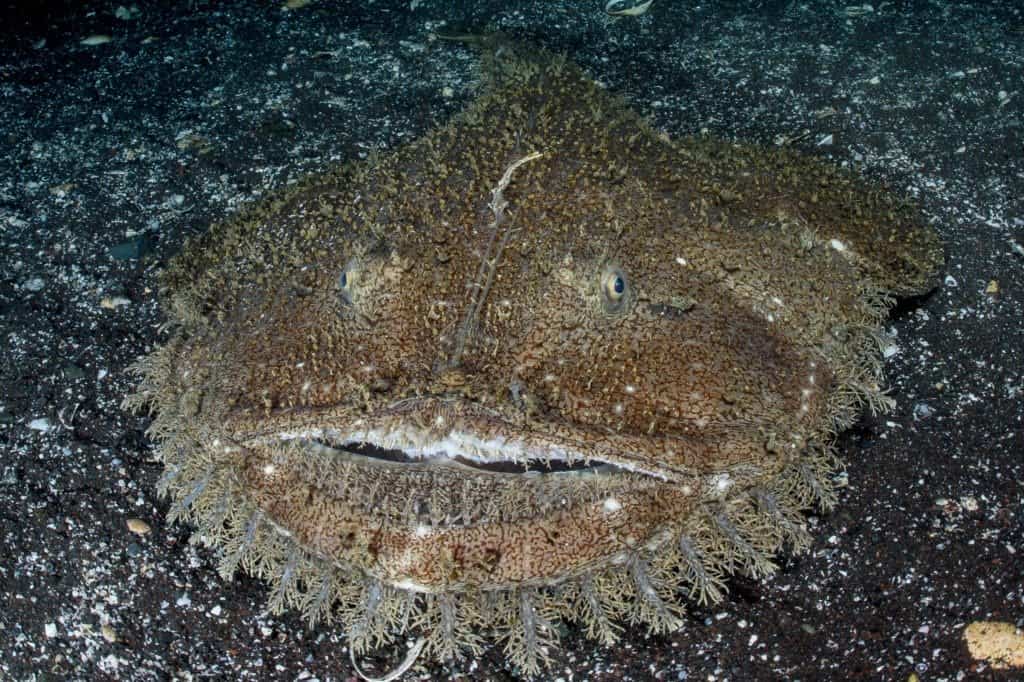
Sometimes referred to as monkfish, many restaurants use the liver of the fish as a fine dining delicacy.
©Martin Voeller/Shutterstock.com
Goosefish are found in most of the ocean, but they prefer the bottom, where they can search along the sand and mud. They will swim as far as 3,300 feet from the surface, attracting prey with their angling apparatus on their nose. These fish get quite big, sometimes reaching almost 5 feet long.
The record for the largest goosefish came from Perkins Cove, just like the largest Atlantic cod. Nancy Lee Regimbald holds the record, which is 49 pounds, 12 ounces. She set it in 1991, and she is one of two women who make an appearance on the list. While Regimbald still holds the record in Maine, a 51-pound catch in Massachusetts surpassed her for the biggest in recorded history.
White Hake – 48 lbs
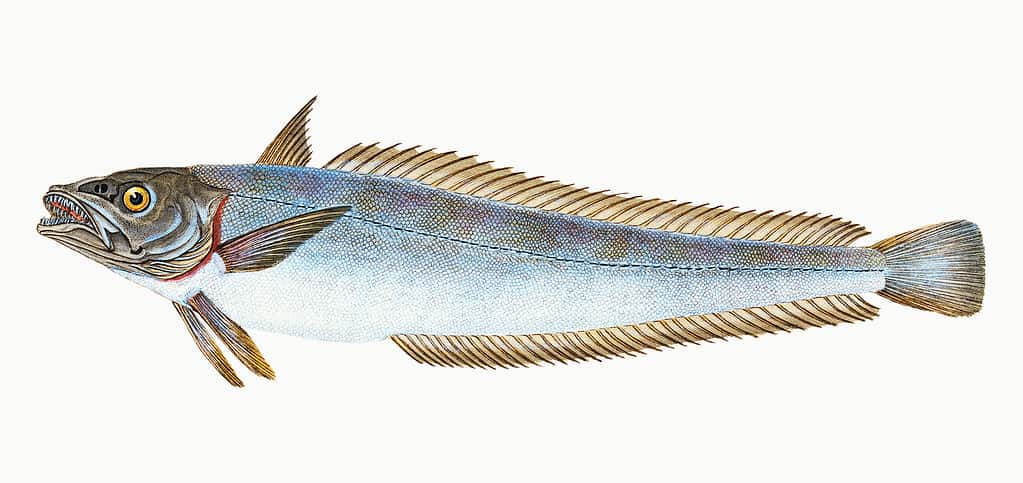
White hake hides in the depths of the northwest Atlantic Ocean.
White hake, also known as mud hake, typically lives at a depth of at least 590 feet. Reaching up to 4.4 feet long, the most common place to find them ranges from North Carolina to Newfoundland. They prefer deep water but don’t see a major surge in growth until after they reproduce.
This record is the third fish to be caught in Maine’s Perkins Cove, but Stephen Selmer set it in 2018. His white hake was 48 pounds, 4.2 ounces. No one set such a high record since 1985. Before Selmer broke the record, it used to be 46 pounds worldwide.
Pollock – 46 lbs

Pollock is a saltwater fish found in North America, Ireland, and the United Kingdom.
©Miroslav Halama/Shutterstock.com
As a member of the cod family, these fish sometimes reach an overall length of 3 feet, but they only average about 12-20 inches. They aren’t a large species like others on this list, usually only weighing 3 pounds in adulthood. Since they need to protect themselves from predatory fish, the speckling on their body camouflages them on the sea flow.
Linda Paul holds the record for the largest pollock caught in Maine. She caught her 46-pound, 10.9-ounce fish in 1990 in Perkins Cove. Previously, Dawn Hersom held the record for the same fishing spot, but her pollock weighed 38 pounds.
Lake Trout – 39 lbs
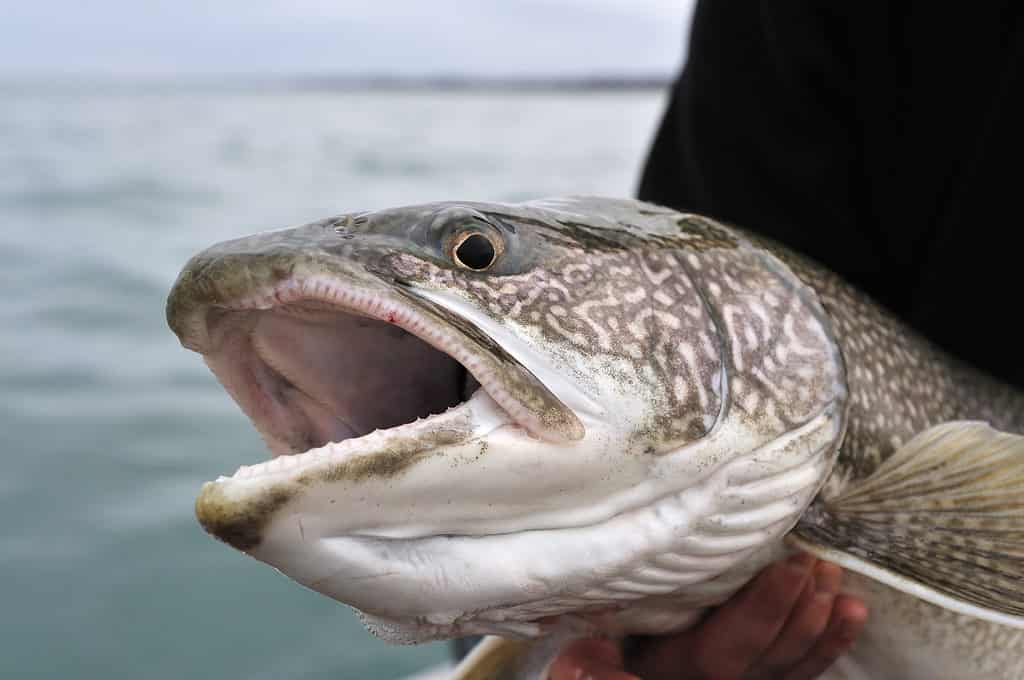
Lake trout exclusively live in freshwater areas, including the local lake where Erik Poland set his record.
©iStock.com/glxedwards
This freshwater char natively lives in North America. The lake trout has many names, including the lake char, togue, and grey trout. Darker lake trout are sometimes called mud hens for their coloring. They need oxygen-rich waters to thrive.
The lake trout serves an excellent purpose as both a game fish and food fish, though it is the only species of its subgenus Cristovomer. As popular as the lake trout seems, distribution is minimal, living in the northeastern region of the United States. While sometimes found in Canada and Alaska, most of its distribution comes from introduction to non-native bodies of water. Introducing them as an invasive species dates back to the 19th century.
Erik Poland’s incredible catch weighed 39 pounds, establishing the state record in 2020. Considering that the typical size of a lake trout is 40 pounds, this size is still notable for locals. His record-breaking catch made the local news at the time. While it took him about 30 minutes to reel in, Poland never imagined he’d bring in such a heavy lake trout (or that he would set a new record).
Torpedo Ray – 35 lbs
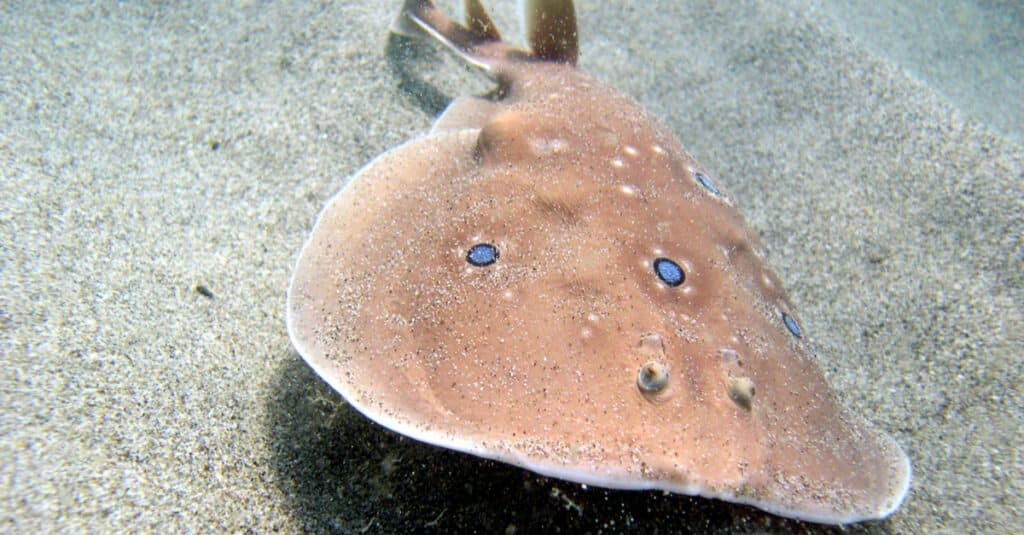
The torpedo ray inspired the name of the naval weapon.
©Gennaro DiBs/Shutterstock.com
There is no bigger electric ray than the torpedo ray. With dangerous electricity surging along the skin’s surface, Ancient Greeks and Romans used it in medicine. These fish prefer a solitary life, hiding along the bottom of the ocean as low as 2,000 feet deep. They typically feed at night on flounder, dogfish, and small sharks, shocking them. While the shock is fatal for its prey, humans experience incredible pain without the same fatality.
Don Carignan set the record with yet another incredible catch at Perkins Cove in 1995. His torpedo ray weighed 35 pounds, 5 ounces, making it only the second time this type of fish has been caught in Maine in nearly 4,000 excursions. Due to the 220 volts of electricity that a single touch releases, Carignan and fellow fishermen didn’t touch it directly, using a fish tote to measure it. Once weighed, they released it back into the water.
Muskellunge – 33 lbs
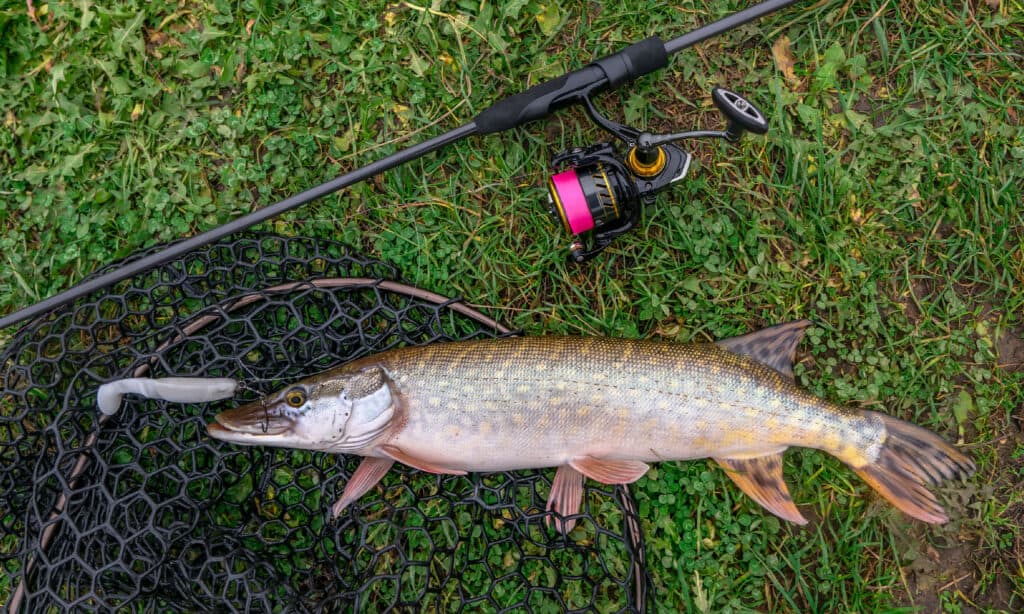
Muskellunge is a part of the Esocidae family, which includes the northern pike and American pickerel.
©iStock.com/FedBul
The final record-size fish on this list is the muskellunge. Also referred to as simply muskies, they have the same body as an ambush predator. Some muskies are just 15 pounds at their adult weight, but they can get as big as 70 pounds in some cases. While some have markings, muskies in turbid waters have none. The largest muskies appeal to trophy anglers.
For many states, muskies are a dangerous and cumbersome invasive species. In Maine, local officials urge anglers not to put them back in the water because they might damage other fish species that natively live there. Onezime Dufour set the record for the largest musky in 2010. He caught the 33-pound fish on St. John’s River.
Top 10 Largest Fish Ever Caught in Maine
| Weight | Type of Fish | Fisher | Year Caught | Location |
|---|---|---|---|---|
| 1,155 lbs | Bluefin tuna | Tim Tower and Percy Stevens, Jr. | 1981 | Perkins Cove |
| 215 lbs | Atlantic halibut | Richard F. Hincman | 1965 | Bailey’s Island |
| 80 lbs 7 oz | Atlantic cod | Neil Downey | 1992 | Perkins Cove |
| 67 lbs | Striped bass | Douglas Dodge | 1978 | Sheepscot River |
| 49 lbs 12 oz | Goosefish (monkfish) | Nancy Lee Regimbald | 1991 | Perkins Cove |
| 48 lbs 4.2 oz | White hake | Stephen Selmer | 2018 | Perkins Cove |
| 46 lbs 10.9 oz | Pollock | Linda Paul | 1990 | Perkins Cove |
| 39 lbs | Lake trout | Erik Poland | 2020 | Richardson Lake |
| 35 lbs 5 oz | Torpedo ray | Don Carignan | 1995 | Perkins Cove |
| 33 lbs | Muskellunge | Onezime Dufour | 2010 | St. John River |
Thank you for reading! Have some feedback for us? Contact the AZ Animals editorial team.








